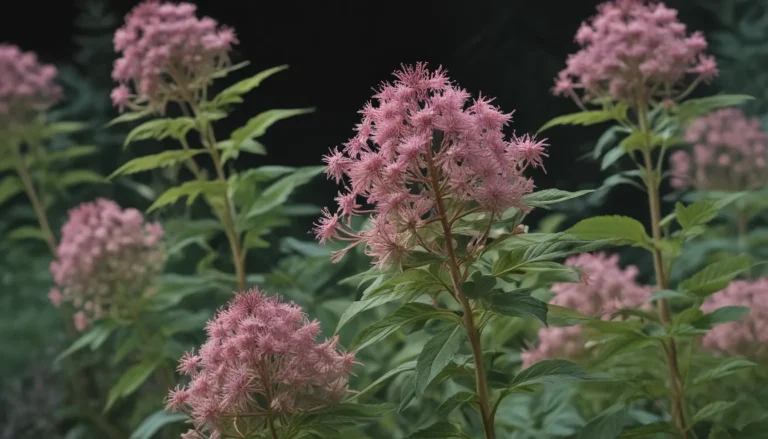The pictures we use in our articles might not show exactly what the words say. We choose these pictures to make you interested in reading more. The pictures work together with the words but don’t take their place. The words still tell you the important facts.
Alnus, commonly known as alder, is a captivating genus of flowering plants that belongs to the family Betulaceae. With over 40 recognized species, alders can be found in various parts of the world, including North America, Europe, Asia, and Africa. These versatile trees and shrubs have garnered the attention of botanists, horticulturists, and nature enthusiasts due to their unique characteristics and ecological significance.
Unveiling the Unique Traits of Alnus
Alnus: A Diverse Genus
Alnus is a diverse genus comprising around 30 species of deciduous trees and shrubs. They belong to the family Betulaceae and are commonly known as alder trees.
Global Presence of Alnus Trees
These trees can be found in various regions across the globe, including North America, Europe, Asia, and North Africa.
Environmental Benefits of Alnus Trees
Alnus trees play a crucial role in ecological systems as they have the unique ability to fix nitrogen from the air, thereby enriching the soil and promoting the growth of other plants.
Distinctive Bark of Alnus Trees
The bark of alder trees is rough and often marked with vertical fissures. It comes in a range of colors, from grayish-white to reddish-brown, depending on the species.
Symbiotic Relationship with Bacteria
Alnus trees form a mutualistic relationship with nitrogen-fixing bacteria known as Frankia. This partnership allows the trees to thrive in nutrient-poor soils.
Ornamental Value of Alnus Trees
Several species of alder trees are cultivated for their attractive foliage and beautiful catkins.
Medicinal Properties of Alnus Trees
Various parts of alder trees have been used in traditional medicine to treat ailments such as inflammation, coughs, and skin conditions.
Wildlife Habitat Provided by Alnus Trees
The dense foliage of alder trees provides shelter and nesting sites for a wide range of bird species. The seeds and catkins also serve as food for many small mammals and birds.
Cultural Significance of Alnus Trees
In folklore and mythology, alder trees are associated with protection, healing, and prosperity.
Climate Change Mitigation
Due to their ability to absorb and store carbon dioxide, alder trees have the potential to contribute to combating climate change and reducing greenhouse gas emissions.
Adaptable Growth Habits
Many species of alder trees are adaptable to different soil and climate conditions, making them suitable for landscaping and reforestation projects.
Riverbank Stabilization
The extensive root systems of alder trees help prevent erosion along riverbanks and contribute to the overall stability of river ecosystems.
Traditional Crafts Using Alnus Trees
Throughout history, the bark of certain alder species has been used for making baskets, mats, and other woven items.
Long Lifespan of Alnus Trees
Depending on the species, alder trees can live for several decades or even up to a century, providing long-term benefits to the environment.
Embark on a Journey of Discovery
In conclusion, Alnus is a fascinating genus of plants with many intriguing facts waiting to be explored. Whether you're a botanist, a nature enthusiast, or simply curious about plants, delving into the world of Alnus is sure to be an enlightening journey filled with wonders and knowledge.
Frequently Asked Questions
Q: What are some common species of Alnus?
A: Some common species of Alnus include Alnus glutinosa (European alder), Alnus rubra (red alder), and Alnus incana (gray alder).
Q: Can Alnus be grown in home gardens?
A: Yes, certain species of Alnus, such as Alnus glutinosa, can be grown in home gardens for their ornamental value.
Q: How do Alnus trees contribute to the ecosystem?
A: Alnus trees are important in the ecosystem as they have the ability to fix atmospheric nitrogen, enriching the soil and supporting the growth of other plants.
Q: Are there any medicinal uses of Alnus?
A: Yes, various parts of Alnus plants have been used traditionally for their medicinal properties, particularly in the treatment of digestive issues and skin ailments.
Q: Can Alnus be used for woodworking?
A: Yes, Alnus wood is often used in woodworking due to its attractive appearance and durability.
Dive Deeper into the World of Alnus
Want to learn more about the captivating world of Alnus? Explore the unique characteristics of white alder trees, which share many similarities with their Alnus cousins. Uncover the ecological importance and remarkable adaptations that make these trees stand out in nature. Dive deeper into the fascinating realm of Alnus and expand your knowledge about these intriguing plants.
Trust in Our Commitment to Quality and Authenticity
Our commitment to delivering trustworthy and engaging content is at the heart of what we do. Each fact on our site is contributed by real users like you, bringing a wealth of diverse insights and information. To ensure the highest standards of accuracy and reliability, our dedicated editors meticulously review each submission. This process guarantees that the facts we share are not only fascinating but also credible. Trust in our commitment to quality and authenticity as you explore and learn with us.






